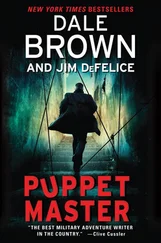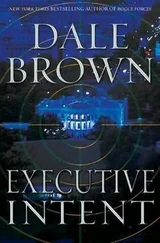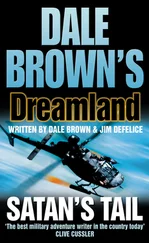Dale Brown - Sky Masters
Здесь есть возможность читать онлайн «Dale Brown - Sky Masters» весь текст электронной книги совершенно бесплатно (целиком полную версию без сокращений). В некоторых случаях можно слушать аудио, скачать через торрент в формате fb2 и присутствует краткое содержание. Жанр: Старинная литература, на английском языке. Описание произведения, (предисловие) а так же отзывы посетителей доступны на портале библиотеки ЛибКат.
- Название:Sky Masters
- Автор:
- Жанр:
- Год:неизвестен
- ISBN:нет данных
- Рейтинг книги:4 / 5. Голосов: 1
-
Избранное:Добавить в избранное
- Отзывы:
-
Ваша оценка:
- 80
- 1
- 2
- 3
- 4
- 5
Sky Masters: краткое содержание, описание и аннотация
Предлагаем к чтению аннотацию, описание, краткое содержание или предисловие (зависит от того, что написал сам автор книги «Sky Masters»). Если вы не нашли необходимую информацию о книге — напишите в комментариях, мы постараемся отыскать её.
Sky Masters — читать онлайн бесплатно полную книгу (весь текст) целиком
Ниже представлен текст книги, разбитый по страницам. Система сохранения места последней прочитанной страницы, позволяет с удобством читать онлайн бесплатно книгу «Sky Masters», без необходимости каждый раз заново искать на чём Вы остановились. Поставьте закладку, и сможете в любой момент перейти на страницу, на которой закончили чтение.
Интервал:
Закладка:
“How do you know those are C601 missiles, and how do you know those were Chinese B-6 bombers, son?” Feinemann snapped. “You’re making reports to your bridge on enemy aircraft that, as far as I can see, you have absolutely no information to make. You’re also chasing away three air-defense fighters from possible engagements without knowing all the facts.”
“The flight profiles, sir, ” Hart explained patiently. “They launched two missiles each from over a hundred miles’ range-that’s too far for a C80 1. Those missiles climbed first, but now they’re descending to about a hundred feet, and they’re cruising at about six hundred knots-typical profile of a C601 missile. “It’s also the profile of an Exocet, a Harpoon, or a Soviet ASS missile, or any number of antiship missiles, ” Feinemann pointed out, his eyes narrowing on Hart. “If we were facing off against the French or the Soviets, I’d agree, sir, ” Hart replied. “The reports from the recon plane say that a Chinese EF4-class ship was in the area and that Chinese troops invaded Mindanao; I’d assume that the fighters and these missiles are Chinese. My guess is still a C601, and that’s what I’ll assume when we begin responding. “As far as the carrier aircraft-each plane was carrying two missiles plus air-to-air weapons, and it was doing some heavy active jamming, not just uplink trackbreaking. That’s too much payload for a J-7, B-7, or Q-5 fighter-it has to be a B-6 Badger bomber. “And as far as the Tomcats are concerned, I want them out of the way. Aegis can prosecute sea-skimming targets better than a Tomcat, and I’m not worried about enemy fighters right now-I’m worried about those missiles. In sixty seconds I’ll start worrying about the inbound fighters.” Hart was expecting a reply; when he got none, he added, “Sir, I need clearance to release batteries and engage when those missiles cross the horizon.”
“Your captain might be impressed with your amateur intelligence analysis, Commander Hart, ” Feinemann said irritably, “but the Admiral needs concrete data before he can commit any forces under his command. He can’t operate on guesses.”
“Then you can tell him, sir that we’ve got four subsonic inbounds that broke the group’s bubble a minute ago, ” Hart said, trying to control his temper. He couldn’t believe he was having an argument over target identification with this man, with four deadly-and possibly nuclear-missiles heading straight for them. “I make estimates on the threat based on my observations, but the bottom line is that I want weapons online to stop these things from hitting the carrier. In thirty seconds I start acting on my own authority; I’m requesting permission to commit now.”
“You commit when the Admiral tells you to!” Hart had had enough. He hit the intercom button. “Bridge, CIC, emergency, request permission to release the batteries fore and aft and engage.” The Bunker Hill’s skipper did not hear the argument between his TAO and the group commander’s AAW deputy, and he certainly knew the procedures with an embarked group commander, but with a threat this big heading in, he didn’t hesitate. “Bridge to CIC, batteries released fore and aft, clear to engage.” “Understand clear to engage. Clear forward and aft missile decks, clear forward and aft missile decks.” From that point on, Hart ignored Feinemann-everything else was inconsequential except his radar, his console, and his weapon system. If the man had anything to say, it would have to wait until after he dealt with the inbounds. The Bunker Hill was the first Aegis cruiser to use the Mk 41 vertical-launch system, where missiles were loaded into individual canisters and then fired vertically-the system was far less complex, more redundant, faster, and required fewer guided-missile mates to operate the launchers than the older Mk 26, Mk 22, or Mk 13 “merry-go-round” launchers. Bunker Hill had two VLS launchers, one fore and one aft, each with sixty-one missiles-combinations of SM-2 Aegis antiaircraft missiles, Tomahawk shipand-landattack cruise missilessome with low-yield nuclear warheads-and ASROC antisubmarine rocket torpedoes. Hart had been extensively briefed on exactly what options were open to him as tactical action officer-he knew that the only weapon in his arsenal right now was the SM-2 Aegis missile, and his only job was to protect Ranger and its escorts. Even though this was probably the exact situation that the Chinese People’s Liberation Army Navy was in when they launched their nuclear antiship missile at the tiny Philippine fleet near Palawan, Hart knew he would never be authorized to let fly with one of his nuclear-tipped Tomahawks, even in retaliation. Hart checked to be sure the Aegis system was in AAW COMMIT mode and used a trackball on his console to move a circle cursor to the data blocks representing the inbound antiship missiles. The ASTAB monitors instantly gave him performance data on the inbounds, displayed IFF radio-identification information-there was none-and classified them as hostile. If they were friendlies-unlikely but possible-they were flying without radios, without exchanging coded identification signals, and flying well off the established fleet approach procedures-and they were going to die. “Give me trial engage, ” he told his data-entry technician. “Trial engage, ” the tech replied. Instantly the data block began to blink and a readout on the ASTAB monitor gave a list of the missiles that Aegis would select. On the LSD, a yellow line showed the computer’s best guess as to the Aegis missile’s track, the intercept points with the incoming missiles, and the positions of all the ships and aircraft in the battle group once the engagement was made. “Aegis wants to commit ten missiles, ” the data-entry tech reported. “We got Bullet Two within twenty miles on impact.” The number was significant because if there were nuclear tipped C601 antiship missiles, the Tomcats would fry in the blast. But if Hart waited any longer, Bunker Hill would be doing the frying. It was also significant because the Mk 41 launcher could rapid-fire only seven missiles at one time. He selected sixty-four nautical miles range on his LSD to keep careful watch on the intercept, then said, “Understood. We’ll do six from the forward launcher and the rest from the aft launcher. Clear trial engage, sound the horn, engage weapon commit.”
“Trial engage clear.” A muted horn sounded throughout the ship, followed by, “Attention all hands, missile alert actual, missile alert actual, stand by for missile launch.” The tech then reported, “Launchers in the green and reporting clear. CDS enable. Weapon commit in three, two, one, now.” The ASTAB monitors cleared, and they began to show the Mk 41 launcher status and the status of the missiles in the forward launcher that were being chosen by the Aegis system for the first ripple. A button marked “Hold Fire” was blinking rapidly in the lower-left corner of the communications panel, where both Hart and his data-entry tech could reach it-Feinemann had a blinking Hold Fire button as well, and he had full authority to use it. Aegis selected ten missiles and began a pre-programmed ten-second warmup and target-data transfer cycle. “Missile counting down, ten missiles in the green. . . missile one forward in five… four… three… two… one… launch! Missiles away. Up on the forward deck of the Bunker IIill, a twenty-fivesquare-inch white door popped open atop the Mk 41 VLS launcher, and a cloud of white smoke engulfed the entire forward portion of the cruiser. Once every two seconds, an Aegis SM-2 missile lifted free of the Bunker Hill, climbed to ten thousand feet in just a few seconds, then arched over and began its intercept. The missiles’ autopilots steered them into an intercept “basket, ” an area in which the incoming targets were predicted to fly. When the Aegis SPY-I radar detected the SM-2 missiles approaching the “basket, ” the SPY-I would activate an SPG-62 X-band target illuminator which would “paint” the incoming Chinese missiles, and the SM-2 Aegis missiles would home in on the radar energy reflected off the enemy missiles. “Six missiles away forward, ” the tech reported. “Forward launcher secure and reporting clear, plenum status normal, refire status normal. Counting down on aft launcher . . . in three… two… one… mark.” The canister door on the aft launcher flipped open and the first SM-2 fired… But something happened. Instead of shooting skyward, the SM-2 rose about twenty feet above the launcher, the solid-propellant motor stopped running, and the missile slipped backwards, crashed to the deck, and exploded. The concussion threw half of the Aegis crew members to the deck. Feinemann was the only one able to react-he hit the Hold Fire button to ensure that no other missiles from the aft launcher tried to launch. “Status report!” he cried out. “Get me a status report!” The damage-control alarm was ringing throughout the Bunker Hill, and there were a few seconds of momentary panic as the CIC lights went out, the emergency lights finally clicked on, and a few purple wisps of smoke issued from the ventilators, “Status report, dammit!” Hart’s ears were ringing hard-from the blast, the confusion, or the sudden disorientation of having the normally steady deck heaving beneath him, he couldn’t tell which-but he managed to straighten himself in his seat and help his tech up. Several ASTAB monitors had gone down, and Feinemann’s LSDs were blank. “Mark 7 system is faulted… both launchers shut down . . . SPY-I is still on-line, ” he reported. On the intercom, he shouted, “Bridge, CIC, Mark 7 system fault, recommend immediate AAW command transfer.”
Читать дальшеИнтервал:
Закладка:
Похожие книги на «Sky Masters»
Представляем Вашему вниманию похожие книги на «Sky Masters» списком для выбора. Мы отобрали схожую по названию и смыслу литературу в надежде предоставить читателям больше вариантов отыскать новые, интересные, ещё непрочитанные произведения.
Обсуждение, отзывы о книге «Sky Masters» и просто собственные мнения читателей. Оставьте ваши комментарии, напишите, что Вы думаете о произведении, его смысле или главных героях. Укажите что конкретно понравилось, а что нет, и почему Вы так считаете.












